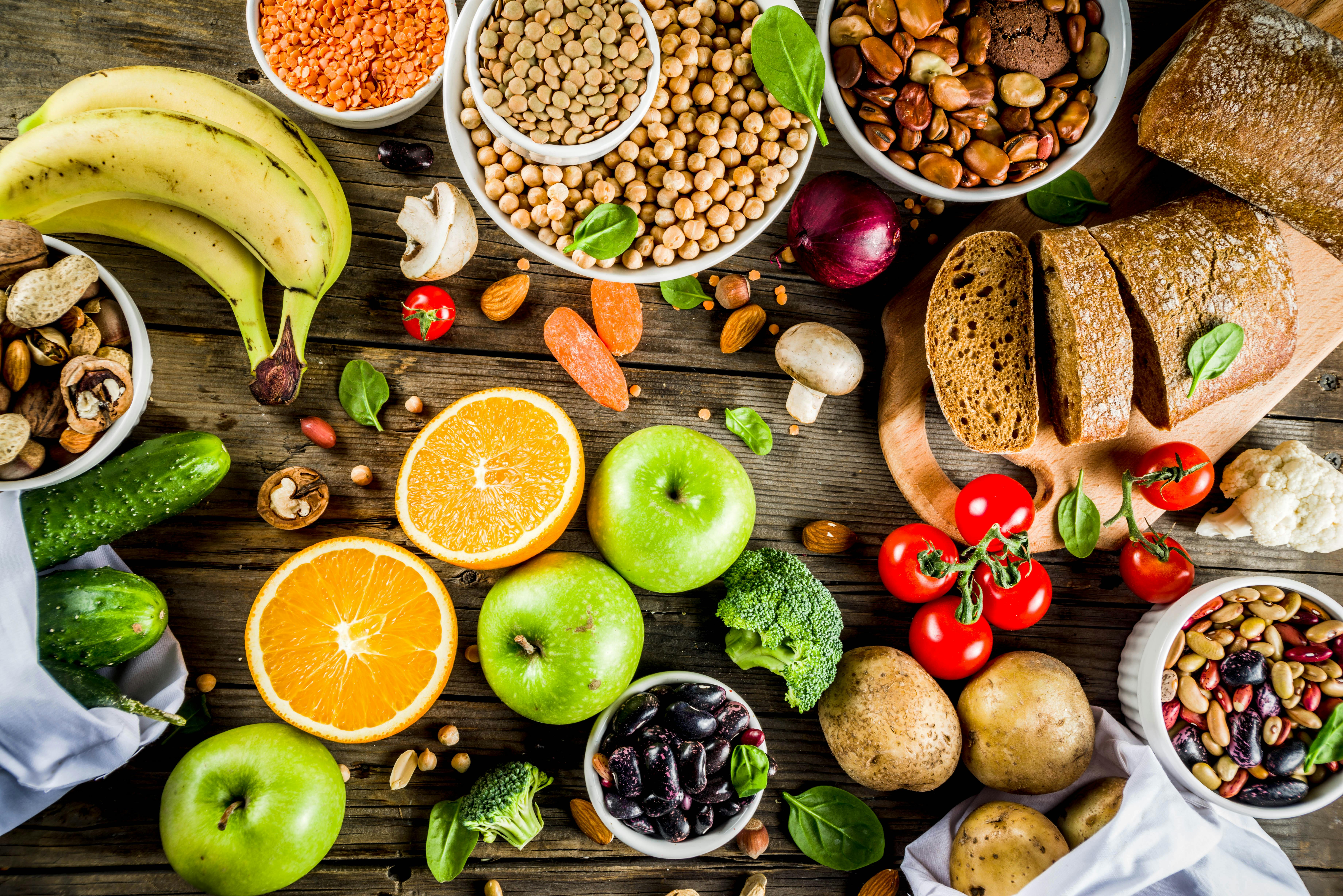
About the Glycemic Index
Explore information about the glycemic index. Discover what the glycemic index is and where your favorite foods fall on the glycemic index scale.
Understanding the Glycemic Index
You may have heard about the glycemic index (GI) and its role in dieting. But what is the glycemic index exactly, and how do glycemic index ratings work? The glycemic index is a system in which foods with carbohydrate are assigned scores based on how they affect your blood sugar levels.1 Scores are classified into three categories: low, medium, and high.1 Low-glycemic foods raise your blood sugar more slowly than high-glycemic foods.1
Is the glycemic index a diet?
No, the glycemic index itself is not a diet. Instead, the glycemic index is a strategy for guiding food choices.1 However, some people may choose to follow a diet plan which uses the glycemic index as a tool to decide what food they do and do not eat. This plan is referred to as a “glycemic index diet” or “low-glycemic diet.”1
What foods do you eat on a GI diet?
When a person follows a GI diet, they focus on eating foods that have a low or medium glycemic index.2 Foods with high glycemic index should be avoided or eaten in combination with low-glycemic foods to keep your blood sugar from rising quickly.2
What’s the purpose of a low-glycemic diet?
The purpose of a low-glycemic diet is to avoid large increases in blood sugar levels.3 Managing blood sugar levels may have benefits for some individuals, such as weight control, although it varies from individual to individual. 3 If you’re interested, talk to your doctor to see if a low-glycemic diet may be beneficial to your health.
How does a low-glycemic diet differ from other diets?
Unlike other diets such as Keto or Atkins, the low-glycemic diet does not necessarily require you to cut out carbohydrates.3 Calorie intake and portion size are not necessarily primary areas of focus. That being said, you may possibly cut down on carbs, calories, or portion size by default when you follow this diet.
Glycemic Index Scale
Each food is assigned a score on the Glycemic Index Scale according to how it affects your blood sugar levels. The scores are as follows:4
- Low-glycemic foods: 55 and under
- Medium-glycemic foods: 56-69
- High-glycemic foods: 70 or higher
The Glycemic Index Scale can be complex. For instance, different variations of foods can have separate GI scores, such as red potatoes vs. white potatoes.5 How food is cooked, stored, and prepared may also affect the score.5 Lastly, you don’t always eat low-glycemic foods alone, and what other foods you eat them with should be taken into account when you’re totaling up the score.5
Glycemic Load
Another factor to take into account when it comes to Glycemic Index is Glycemic Load. Glycemic Load is a measurement that accounts for a food item’s glycemic index value in relation to a typical serving size.4 In addition to GI score, it’s important to factor in Glycemic Load when following a GI diet.
Glycemic Index Chart
Different foods will have different GI scores. Check out the chart from MedlinePlus below to learn more about low, medium, and high glycemic index foods:6,7
Low-glycemic foods (0 to 55):
- Bulgar
- Barley
- Pasta, rice
- Quinoa
- High-fiber bran cereal
- Oatmeal
- Carrots
- Apples
- Oranges,
- Grapefruit
- Nuts
- Legumes
- Beans
- Milk
- Yogurt
Medium-glycemic foods (56 to 69):
- Rye bread
- Couscous
- Brown rice
- Raisins
High-glycemic foods (70 and higher):
- White bread
- Processed cereals and instant oatmeal
- Potatoes
- White rice
- Honey
- Watermelon
- Pineapple
How food affects blood sugar levels can vary depending on the individual. And remember, GI score can vary based on food preparation/storage and what combination of foods you eat. View the values listed above as general guidelines for glycemic index but remember that score variations are possible.
Is a GI diet healthy?
Whether or not a low-glycemic diet is right for you depends on you and your specific health needs. If you’re looking for ways to manage your blood sugar levels through diet, you may want to talk to your doctor, or another qualified health practitioner, to see if this kind of diet could be a good option for you. Certain low-glycemic foods, such as fruits and veggies, have antioxidants and fiber—both of which can be beneficial for your digestive health. However, not all low-GI foods are necessarily diet-friendly. For instance, ice cream can have a lower GI score than watermelon4, but it also has more calories and saturated fat—and possibly not as many good-for-you nutrients! Keep this in mind if you’re using the glycemic index to help guide your food choices.
If you choose to follow a GI diet, go beyond scores and focus on eating a well-balanced diet packed with nutritious recipes to make sure your body is getting all the vitamins and nutrients it needs.
- Glycemic index diet: What’s behind the claims. Mayo Clinic. https://www.mayoclinic.org/healthy-lifestyle/nutrition-and-healthy-eating/in-depth/glycemic-index-diet/art-20048478. Accessed 2/18/2021. Referenced text is highlighted in source PDF.
- Diabetes: Eating Low Glycemic Foods. University of Michigan. https://www.uofmhealth.org/health-library/aba5112. Accessed 2/18/2021. Referenced text is highlighted in source PDF.
- Glycemic index diet: What’s behind the claims. Mayo Clinic. https://www.mayoclinic.org/healthy-lifestyle/nutrition-and-healthy-eating/in-depth/glycemic-index-diet/art-20048478. Accessed 2/18/2021. Referenced text is highlighted in source PDF.
- Glycemic Index Diet and Diabetes. Beyond Type 1. https://beyondtype1.org/glycemic-index-diet-diabetes/. Accessed 2/18/2021. Referenced text is highlighted in source PDF.
- Diabetes: Eating Low Glycemic Foods. University of Michigan. https://www.uofmhealth.org/health-library/aba5112. Accessed 2/18/2021. Referenced text is highlighted in source PDF.
- Glycemic index and diabetes. MedlinePlus Medical Encyclopedia. https://medlineplus.gov/ency/patientinstructions/000941.htm. Accessed 2/18/2021. Referenced text is highlighted in source PDF.
- GI Search. https://glycemicindex.com/gi-search/. Accessed 9/29/2021. Referenced text is highlighted in source PDF.


